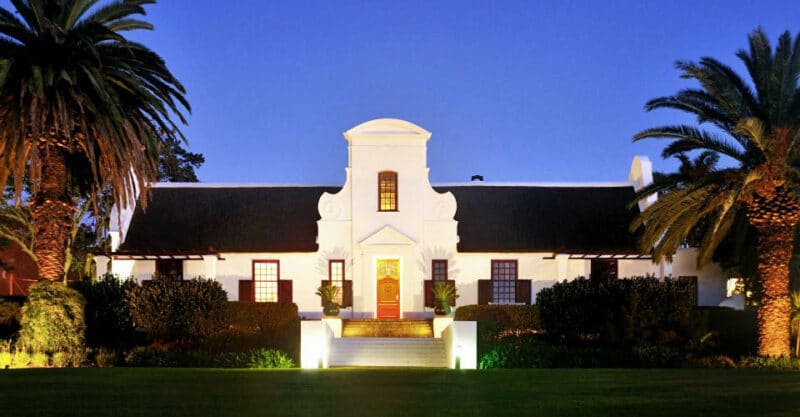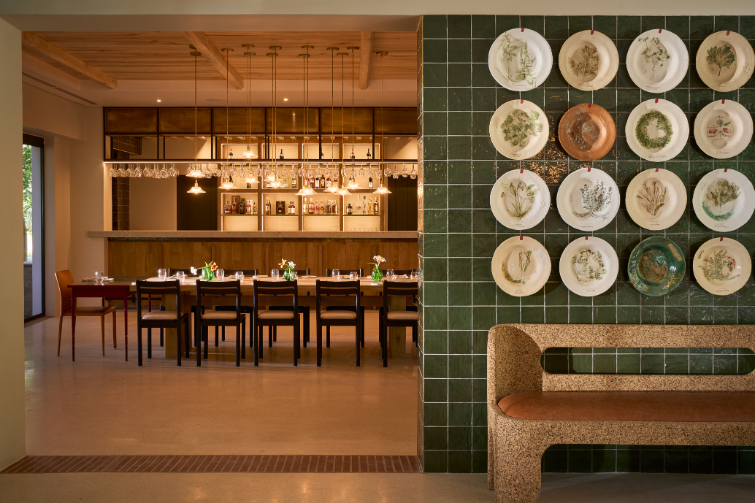It’s hard to believe Meerendal’s current proprietors, Herman and Aletta Coertze, are only its sixth owners since 1702, when Cape governor Willem Adriaan van der Stel granted a plot of land to one Jan Meerland and his wife Christina Stans. The couple named their new farm Meerdal.
In 1706, Jan Meerland and four others defended a case against Governor Van der Stel before the Lords Seventeen in Amsterdam. Unfortunately, Jan Meerland died on the return voyage in 1707. By then, the farm was already prized for its wine production. It was always believed his widow Christina had planted 60 000 vines during her tenure, but this fact has recently come in question. “Studying old tax records, we discovered that we had it wrong. Christina didn’t plant all those vines; they were already there!” cellar master Wade Roger-Lund explains. “That means our story needs to change.”
Meerendal has had its share of change over the years. The farm’s modern history begins in 1881, when it was renamed to Meerendal. It was soon acquired by William Starke in 1929, and over the next 75 years the family developed Meerendal to the fully-fledged wine farm it is known as today. William built the manor house in 1936 and the cellar in 1943, setting the stage for his son Kosie, who put Meerendal on the map with Pinotage and Shiraz in the 1970s. Meerendal was one of the first fourteen wine estates to be granted estate status under the Wine of Origin scheme in 1973.
Unfortunately, the brand began to lose some of the excitement and romance that surrounded it in its early days, and the prestige of its later period began to lose its lustre. It was time for a renewal.
Untapped potential
Wade says he was drawn by Meerendal’s evident potential to take up the position as head winemaker in 2022. “The vineyards are really special, and getting the wine right is really not that hard,” he says. “We’re doing all the right things where it matters. The challenge now is to elevate the brand in the public eye. That’s what I’m putting my name behind.”
With full buy-in from the Coertze’s to reboot the brand, Wade appointed Trudie Mulder as junior winemaker for a fresh perspective on the wine range. The old open-top fermenters of the 1943 cellar are still in use, but these days they are supplemented by modern stainless-steel tanks, French oak barrels and a state-of-the-art lab for on-site analyses.
- Meerendal cellar master Wade Roger-Lund
- Assistant winemaker Trudie Mulder.
Nature first
This includes becoming a fully organic farm. With some Sauvignon Blanc and young Merlot blocks already certified during a trial period, the Pinotage, Pinot Noir, Shiraz and Cabernet Sauvignon are already being converted. By the end of the year, half of the vineyards will be certified. “Next year we’ll complete the other half, and by 2028 the farm will be 100% certified organic. I want the vines to grow in living soil, with all the organic matter that comes with it. Then you know your vines are in a healthy environment.”
Once the conversion is complete, new planting can begin to serve a revamped line-up of wines, presented in two tiers: the Estate range features the farm’s single varietals, while the Collection Range includes the flagship barrel selection of the Heritage Block. New entries include a Sauvignon Blanc sparkling wine, a barrel-fermented Sauvignon Blanc (The Chapel Blanc Fumé), and a new Cabernet Sauvignon/Merlot-driven blend (The Mill House). Wade’s expertise in making Cap Classique will come in useful for a Cap Classique in each of the two ranges.
A separate commercial range called Bigfeet Pressed by Elephants, comprising a Sauvignon Blanc and a red blend, serves the retail and on-consumption markets. “We have a big affinity for nature conservation. There are already ten Nyala on the farm, with Springbok and even Buffalo on the way. A portion of the proceeds goes toward elephant conservation.”

Meerendal Manor House
The feminine touch
The trump card is surely their 6-hectare of Pinotage, the Heritage Block, established in 1955 from the original clone grafted by Professor AI Perold. It’s the perfect place on which to stake Meerendal’s revival as one of South Africa’s premier wine estates. “The last wine made from this block was in 2017,” Wade says. “This year will be the first single vineyard Heritage Block Pinotage we’ve bottled in seven years.”
The wine style will be the most noticeable break from the past, and the Perold clone will become the cornerstone of Meerendal’s focus. The barrel regiment has changed to just 30% new oak, with the majority in 500 litre barrels, all light or at most medium-toast. Only 1900 litres will be produced. “I look at Meerendal as a pyramid, and The Heritage Block will be its tip,” Wade says.
Professor Perold based his clone on the femininity of Pinot Noir, and the wine is strikingly fresh and flavourful. “Cold climate environments are well-suited for more feminine, delicate styles, and I look forward to leaning more into that style of Pinotage.”
Over the past five years, cuttings from these vines have been undergoing the rigorous process of cleaning and propagation by Vititec. This new virus-free plant material will become available next year, Wade says.
For the moment, production volumes remain low as Wade and Trudie learn the nuances of each block. But more Pinotage is coming, and Meerendal will begin flexing its muscles in competitions this year. If that doesn’t make your ears prick up, just wait until the Heritage Block Pinotage hits the market in 2025.

AI Perold’s original Pinotage clone lives on in The Heritage Block at Meerendal.















